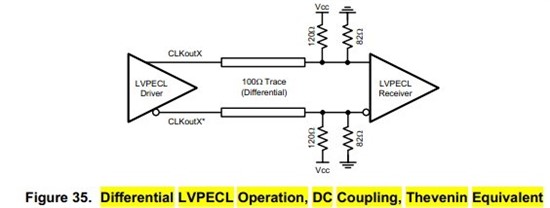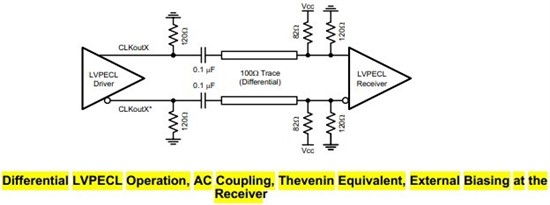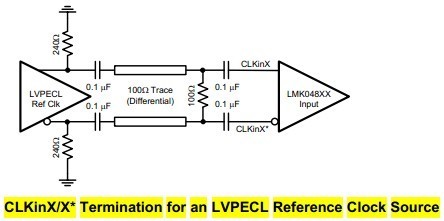sir:
I use LMK04816 clock output in LVPECL.
(1)The termination for dc coupled differential operation and ac coupled differential operation is different. while the dc coupled operation terminate to Vcc-2V, the ac coupled operation terminate to 2V( as the two pictures below show). Why these two voltages are different?
(2) For AC coupling, LVPECL drivers require a emitter resisteors to configure a DC path to ground. In some case, I find the emitter resistors is 120ohm(like the picture above), in some other cases the emitter resistors is 240ohm(like the picture below). What is the difference?
Thank you!
Regards
Jacky
2013-06-03




